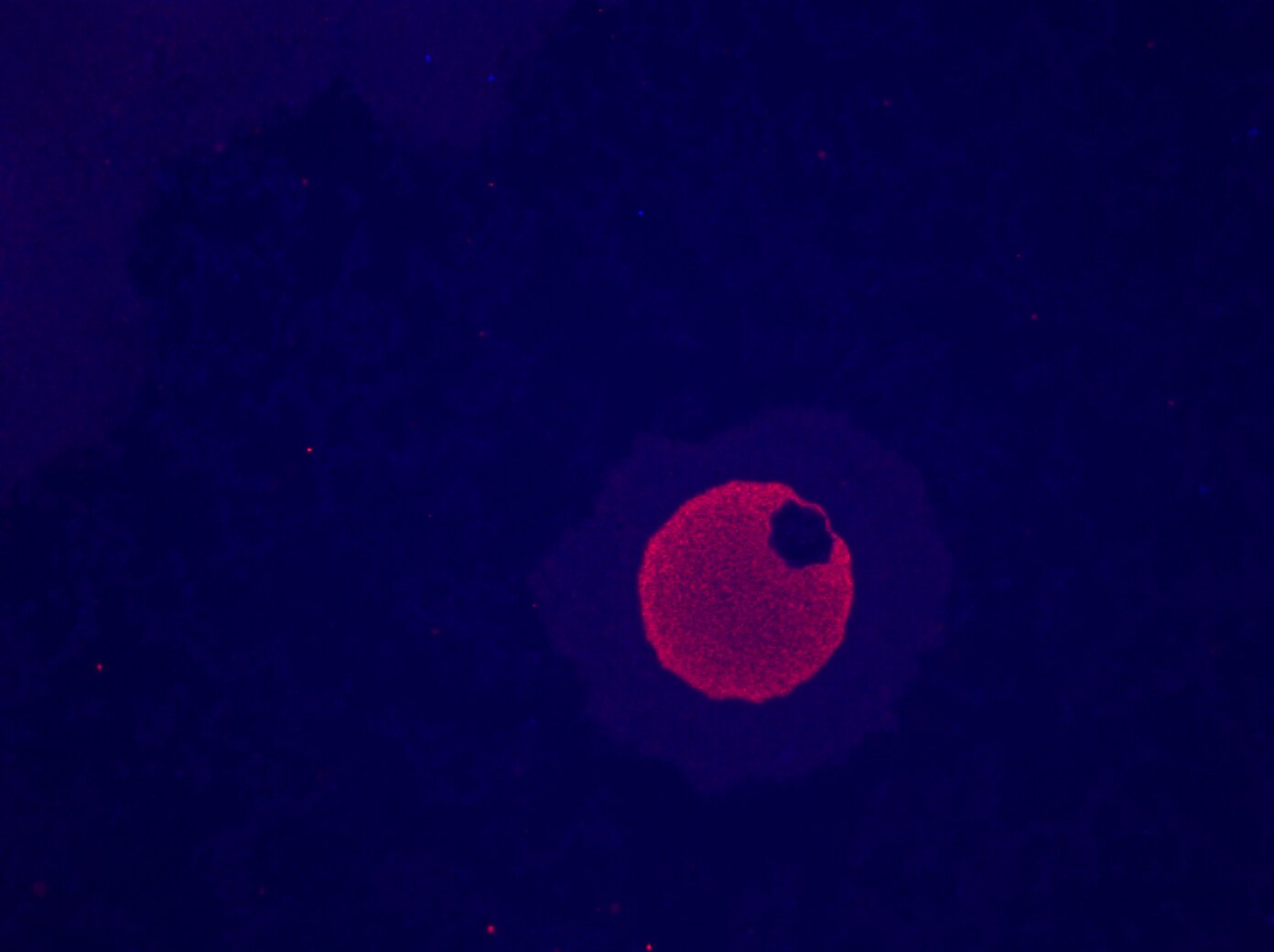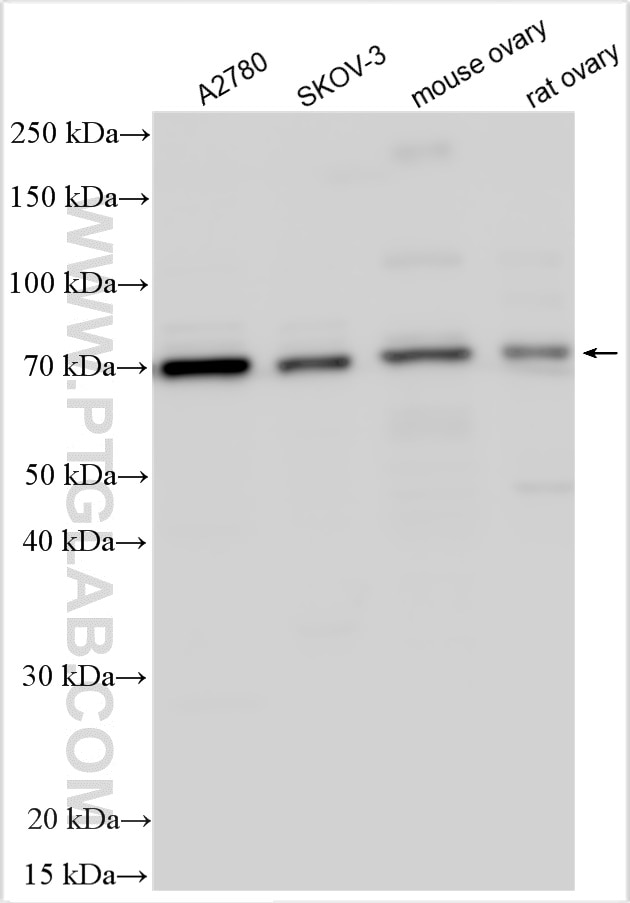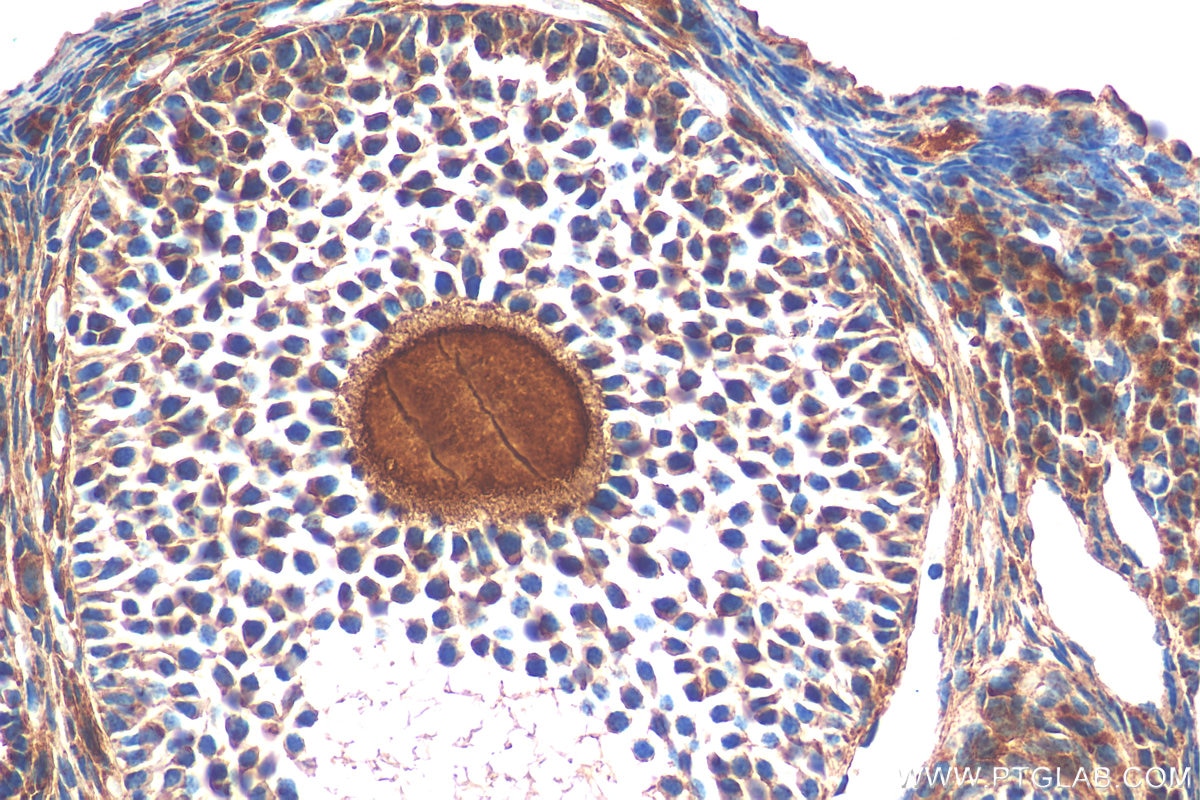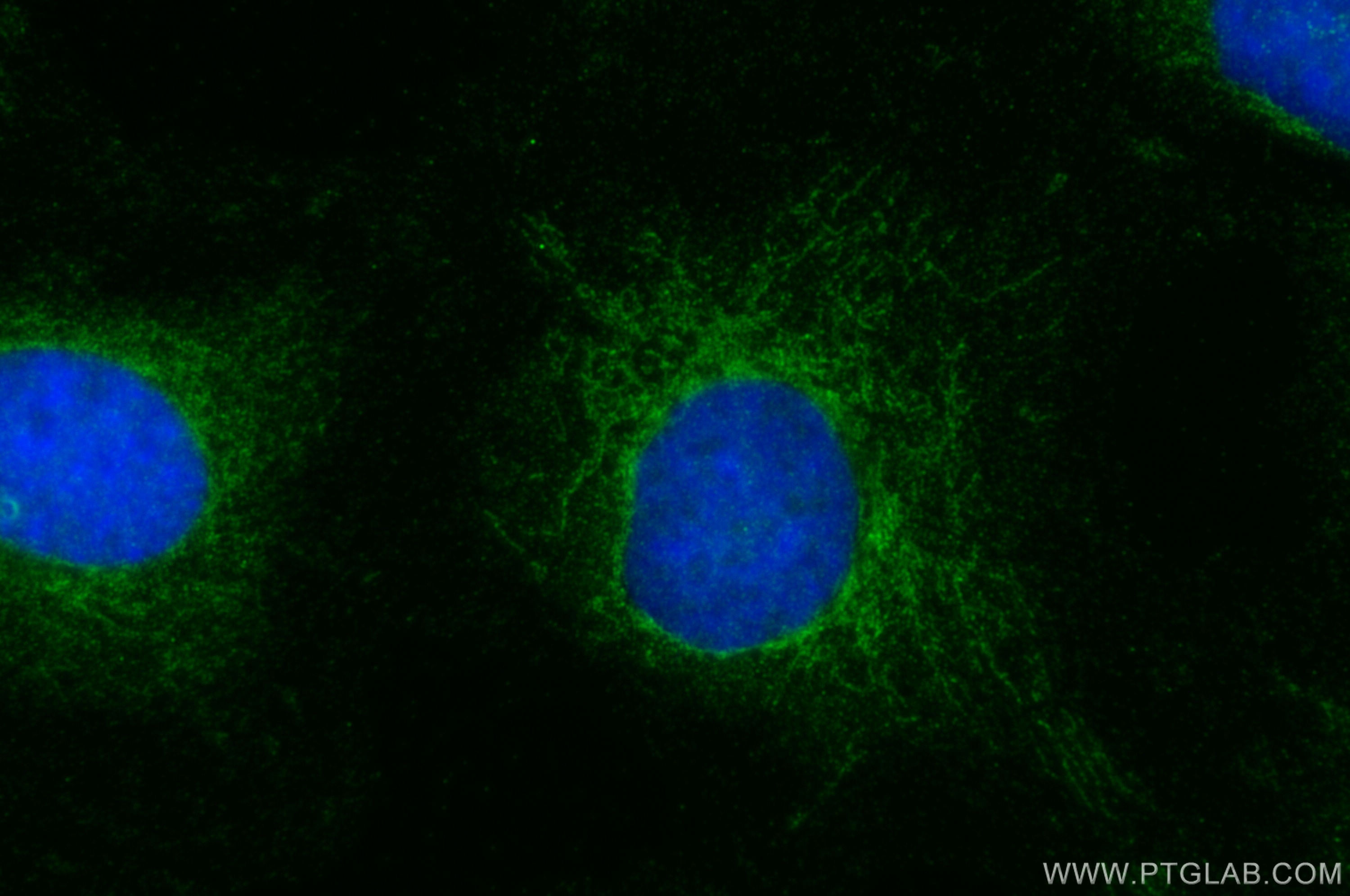GDF9 Polyklonaler Antikörper
GDF9 Polyklonal Antikörper für WB, IHC, IF/ICC, ELISA
Wirt / Isotyp
Kaninchen / IgG
Getestete Reaktivität
human, Maus, Ratte
Anwendung
WB, IHC, IF/ICC, ELISA
Konjugation
Unkonjugiert
Kat-Nr. : 29309-1-AP
Synonyme
Geprüfte Anwendungen
| Erfolgreiche Detektion in WB | A2780-Zellen, Maus-Eierstockgewebe, Ratten-Eierstockgewebe, SKOV-3-Zellen |
| Erfolgreiche Detektion in IHC | Maus-Eierstockgewebe Hinweis: Antigendemaskierung mit TE-Puffer pH 9,0 empfohlen. (*) Wahlweise kann die Antigendemaskierung auch mit Citratpuffer pH 6,0 erfolgen. |
| Erfolgreiche Detektion in IF/ICC | SKOV-3-Zellen |
Empfohlene Verdünnung
| Anwendung | Verdünnung |
|---|---|
| Western Blot (WB) | WB : 1:500-1:1000 |
| Immunhistochemie (IHC) | IHC : 1:50-1:500 |
| Immunfluoreszenz (IF)/ICC | IF/ICC : 1:200-1:800 |
| It is recommended that this reagent should be titrated in each testing system to obtain optimal results. | |
| Sample-dependent, check data in validation data gallery | |
Veröffentlichte Anwendungen
| IF | See 1 publications below |
Produktinformation
29309-1-AP bindet in WB, IHC, IF/ICC, ELISA GDF9 und zeigt Reaktivität mit human, Maus, Ratten
| Getestete Reaktivität | human, Maus, Ratte |
| In Publikationen genannte Reaktivität | Maus |
| Wirt / Isotyp | Kaninchen / IgG |
| Klonalität | Polyklonal |
| Typ | Antikörper |
| Immunogen | GDF9 fusion protein Ag29603 |
| Vollständiger Name | growth differentiation factor 9 |
| Berechnetes Molekulargewicht | 454 aa, 51 kDa |
| Beobachtetes Molekulargewicht | 70 kDa |
| GenBank-Zugangsnummer | BC096228 |
| Gene symbol | GDF9 |
| Gene ID (NCBI) | 2661 |
| Konjugation | Unkonjugiert |
| Form | Liquid |
| Reinigungsmethode | Antigen-Affinitätsreinigung |
| Lagerungspuffer | PBS with 0.02% sodium azide and 50% glycerol |
| Lagerungsbedingungen | Bei -20°C lagern. Nach dem Versand ein Jahr lang stabil Aliquotieren ist bei -20oC Lagerung nicht notwendig. 20ul Größen enthalten 0,1% BSA. |
Hintergrundinformationen
GDF9 (Growth/differentiation factor 9) belongs to the TGF-beta family. GDF9 is required for ovarian folliculogenesis. GDF9 and BMP15 are oocyte-secreted factors with a leading role in the control of ovarian function in female reproduction, modulating both the cell fate of the somatic granulosa cells and the quality and developmental competence of the egg (PMID: 29544636). GDF9 promotes cell transition from G0/G1 to S and G2/M phases, through an increase of CCND1 and CCNE1 expression, and RB1 phosphorylation (PMID: 19366876). It regulates STAR expression and cAMP-dependent progesterone release in granulosa and thecal cells. GDF9 attenuates the suppressive effects of activin A on STAR expression and progesterone production by increasing the expression of inhibin B (PMID: 21829661). It suppresses FST and FSTL3 production in granulosa-lutein cells (PMID: 21632818, PMID: 21829661).
Protokolle
| PRODUKTSPEZIFISCHE PROTOKOLLE | |
|---|---|
| WB protocol for GDF9 antibody 29309-1-AP | Protokoll herunterladen |
| IHC protocol for GDF9 antibody 29309-1-AP | Protokoll herunterladenl |
| IF protocol for GDF9 antibody 29309-1-AP | Protokoll herunterladen |
| STANDARD-PROTOKOLLE | |
|---|---|
| Klicken Sie hier, um unsere Standardprotokolle anzuzeigen |
Rezensionen
The reviews below have been submitted by verified Proteintech customers who received an incentive for providing their feedback.
FH Yiran (Verified Customer) (09-19-2024) | Works well on paraffin-fixed sheep ovary for immunofluorescent
 |




